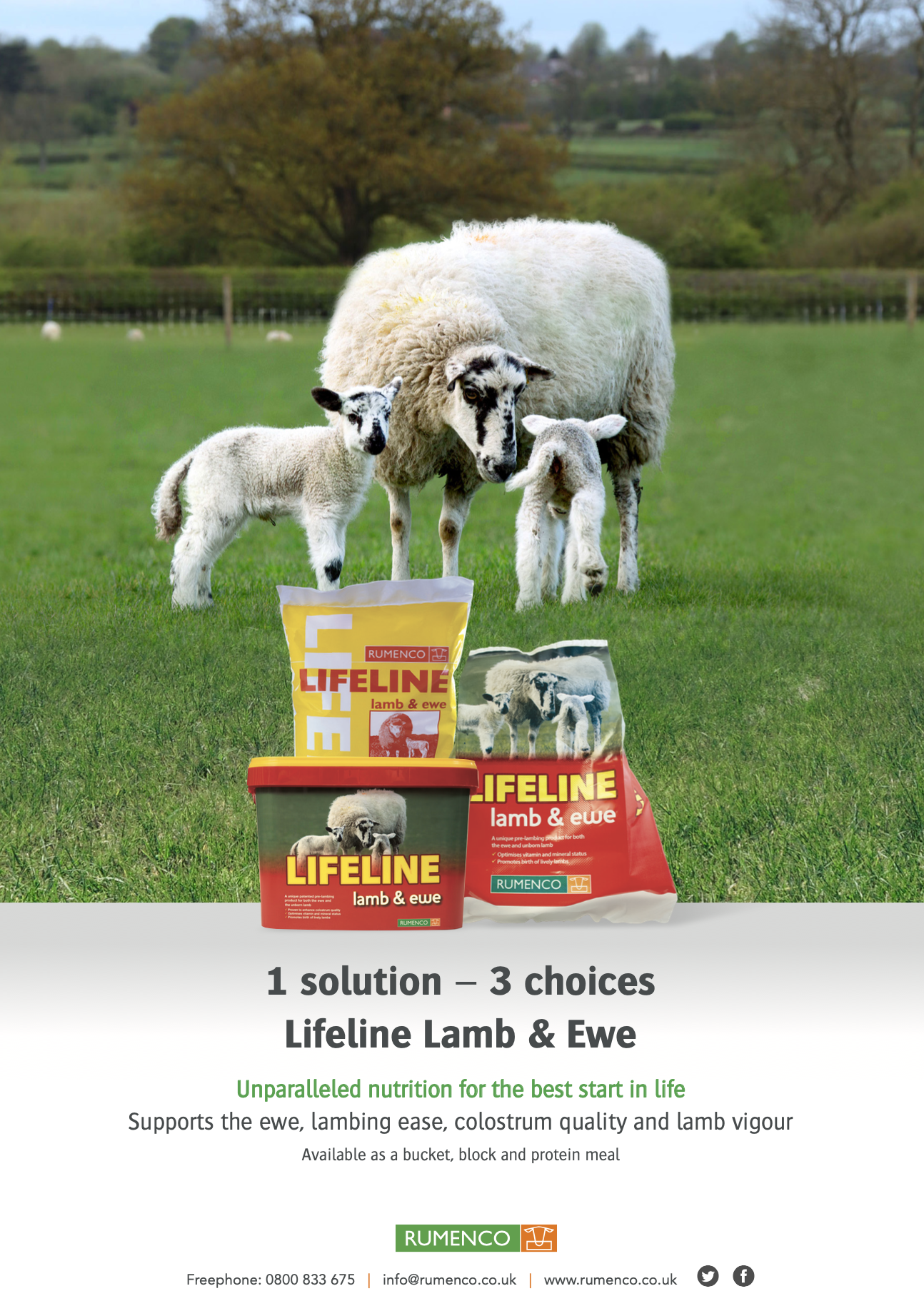Lifeline Lamb & Ewe: Pre-Lambing
 With the recent announcement of changes to the Basic Payment Scheme over the next four years, it is more important than ever to be thinking about reducing losses and maximising lambing success.
With the recent announcement of changes to the Basic Payment Scheme over the next four years, it is more important than ever to be thinking about reducing losses and maximising lambing success.
Lambing success will be influenced by a number of factors including disease, labour provision and management at lambing time. However, arguably one of the most important factors that will influence lambing season success will be the nutrition of the ewe throughout pregnancy and in particular during late pregnancy. With 60% of lamb losses at lambing time being related to incorrect nutrition in late pregnancy, it is important to make sure that ewes are fed to meet their nutritional requirements to avoid problems occurring at this critical time.
Overfeeding ewes in late pregnancy will supply more energy to the ewe than required. An increased energy supply can result in fat accumulating around the pelvic area which increases the risk of dystocia, ewes are also more prone to prolapses when overfed in late pregnancy. An increased energy supply to the lamb may result in larger lambs being born which will increase the risk of dystocia at lambing and can reduce lamb survival.
Underfeeding ewes in late pregnancy is likely to result in a shortage of energy supply to the lamb(s) and as a result, lambs may be born small, weak and will have less brown fat available for mobilisation during the first few hours of life. The quality and quantity of colostrum produced is likely to be insufficient if ewes have been underfed in late pregnancy and will often result in a poor chance of survival for the lambs. If there is a large deficit in energy then the ewe will be forced to mobilise her own body reserves which can result in an increased risk of pregnancy toxaemia, potentially leading to the death of the ewe and the unborn lambs.
It is difficult to guess whether your ewes are being under/ overfed in late pregnancy if you don’t know the quality of the forage being fed and the number of lambs each ewe is carrying. Therefore, scanning ewes in mid pregnancy and getting a forage analysis undertaken will pay dividends when calculating quantities of feed required. For example, forage with an energy content of 11MJ ME/kg DM with a good intake factor, may negate the need for concentrates even for twin-bearing ewes, only requiring a balance of digestible undegradable protein (DUP). In comparison, a forage with an energy content of 10MJ ME/kg DM will require additional concentrates to meet ewe requirements for energy and protein. Simply put, a 1MJ ME/kg DM increase in forage energy values will significantly impact the amount of additional supplementation required. Furthermore, single bearing ewes will require significantly less energy than a triplet bearing ewe, as energy supply in late pregnancy will be diverted to growth of the lambs.
Rumenco’s LIFELINE Lamb and Ewe range can form the basis of any late pregnancy/lambing nutrition plan, providing essential nutrients required to support both the ewe and unborn lamb. There are three products in the range to suit all farming systems: Lifeline Lamb and Ewe bucket, Lifeline Lamb and Ewe Protein Meal and Lifeline Lamb and Ewe block.
Which Lifeline Lamb and Ewe product is recommended for your feeding system?
Lifeline lamb and Ewe bucket, is suitable for feeding alongside good quality forage and concentrates, it contains high levels of DUP from natural protein sources to support colostrum production. The Lifeline Lamb and Ewe bucket is the only pre-lambing bucket proven by SRUC (formerly SAC) to improve colostrum quality, observing a 25% increase in immunoglobulin (IgG) levels.
Lifeline Lamb and Ewe protein meal, if ewes are at target BCS and are fed a very good quality silage (11.5 ME+), feeding the protein meal may be an option for your flock. When fed at the recommended levels of 125g/lamb carried, the industry recommendation of 100g/soyabean meal per lamb can be achieved- often negating the need for any additional concentrates to be fed (speak to your nutritionist for advice).
Lifeline Lamb and Ewe feed block is suited to those systems where forage quality may be average or poor and where ewes would benefit from 2 sources of protein (natural and urea) to support forage utilisation. It can be fed alongside concentrates and can be a good source of energy.